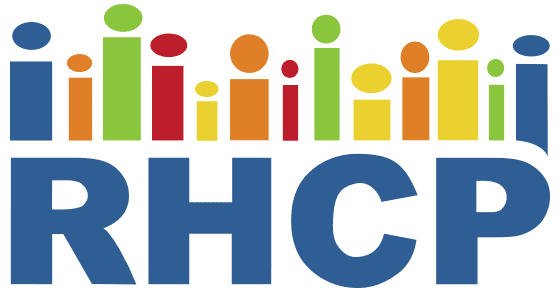Publications Approach
Academic and community partners work together to produce high-quality, relevant publications. Our community partners are actively involved in the creation of manuscripts, serving as co-authors and contributors.

Most Recent Publications
Discrimination is detrimental to health. Little is known about perceived discrimination among Somali immigrants. We examined whether age or proportion of lifetime in the United States was associated with perceived discrimination among Somali immigrants. Guided by Intersectionality, we described a secondary analysis of Everyday Discrimination Scale (EDS) survey data from the Healthy Immigrant Community study. Younger participants ( ≤40 years) experienced more discrimination than older participants ( >40 years). Higher education, being male, and earning $20,000-$39,999 was associated with more perceived discrimination. These findings suggest that Somali immigrants who are younger, more formally educated, male, and/or earn $20,000-$39,000 report more discrimination than their counterparts. Possible explanations include exposure to discrimination outside the Somali community or more awareness about racism. Alternatively, the EDS may not capture the discrimination experienced by Somali women or older adults. Further research is needed to address the discrimination experienced by Somali immigrants
Evidence-based health promotion programs are commonly assessed within research environments, yet there is a critical need to understand how to implement interventions across multiple settings, prioritizing populations who are underserved and under-resourced. A possible approach involves leveraging established social networks to enhance health outcomes. Within these networks, influential individuals, known as health promoters (HPs), play a key role in disseminating health information. The Rochester Healthy Community Partnership created a social network–based intervention called Healthy Immigrant Community (HIC), utilizing HPs to encourage healthy eating and physical activity to address cardiovascular disease outcomes among Hispanic/Latino and Somali immigrant populations. We conducted three focus groups pre-, mid-, and post intervention (nine groups total; n = 30) to understand HPs’ motivations for participating, implementation barriers and facilitators they faced, and suggestions for improvement.
The rates of obesity among immigrant populations within the USA rise with increasing duration of residency. The aims of this study were to examine weight self-perception and body image discrepancy within a large community sample of Hispanic and Somali predominantly immigrant adults.
Cancer is the leading cause of death among Hispanic/Latino individuals, yet many do not complete cancer screenings due to systemic barriers. To address this issue, Rochester Healthy Community Partnership (RHCP) created “Stories for Change: La detección temprana puede salvar vidas” (S4C-cancer prevention). This digital storytelling intervention involved eight Hispanic/Latino cancer survivors or co-survivors who shared their experiences by creating 2-min videos. Their heartfelt stories aim to help patients make informed decisions about cancer screenings. RHCP piloted S4C-cancer prevention at three clinical sites to assess intervention acceptability and success (cancer screenings completed).
Rochester Healthy Community Partnership, a 20-year community based participatory research partnership, used photovoice to learn about Hispanic/Latino and Somali immigrants’ health concerns. Participants photographed their health-related priorities, reflected, developed policy recommendations, and shared photographs at a public event and rotating exhibit in 2024. More than 100 people attended the event (19 decision makers, 64 members of the public, 11 immigrant leader participants, 11 research staff). All decision-maker and public survey respondents reported learning something new about the priorities of Hispanic/Latino and Somali immigrants.
Hispanic/Latinx individuals have high prevalence of type 2 diabetes and its complications yet often face barriers in accessing diabetes prevention and self-managemenet interventions. One possible approach is to implement digital storytelling interventions, which involve narrative-driven videos made by individuals who have lived experience with particular conditions or illnesses. These stories can inspire viewers with similar life experiences to change behaviors or attitudes. Little is known about which characteristics influence how individuals respond to digital storytelling interventions with healthful behaviors and improved outcomes - information necessary to further tailor these interventions to improve type 2 diabetes outcomes. Previously, the Rochester Healthy Community Partnership used the digital storytelling process to develop Stories for Change Diabetes and tested intervention effectiveness.
Hispanic adults with type 2 diabetes (T2D) are more likely to develop complications and die from the disease than the US general population. Digital storytelling interventions are narrative-based videos elicited through a community-based participatory research approach to surface the authentic voices of participants overcoming obstacles to health-promoting behaviors that perpetuate health inequities; research on the effect of digital storytelling on T2D outcomes among Hispanic adults is lacking.
After settling in the United States (US), immigrants often accumulate obesity and cardiovascular risk factors. As mood is often associated with health behaviors in the US population, mood may be an important mediating factor in immigrant populations.
Evidence-based health promotion programs in group settings have been shown to be effective at improving health behaviors in general populations, [7] but despite calls for interventions to address obesity and health behaviors among immigrant populations, [8] few intervention studies have been reported. [9]
Culturally tailored interventions are needed to address cancer screening disparities [6, 7]. One potential solution is using digital storytelling (DST) [8].
Im/migrants (immigrants and migrants, including refugees, asylum seekers, and individuals without legal documentation) experience unique assets and needs in relation to coronavirus disease 2019 (COVID-19). Community-based participatory research (CBPR) is one way to engage im/migrant communities.
Community engagement is important for reaching populations at risk for health inequities in the coronavirus disease 2019 (COVID-19) pandemic.
Community-engaged research partnerships promote health equity through incorporation of regional contexts to inform partnership dynamics that shape research and interventions that reflect community voice and priorities.
